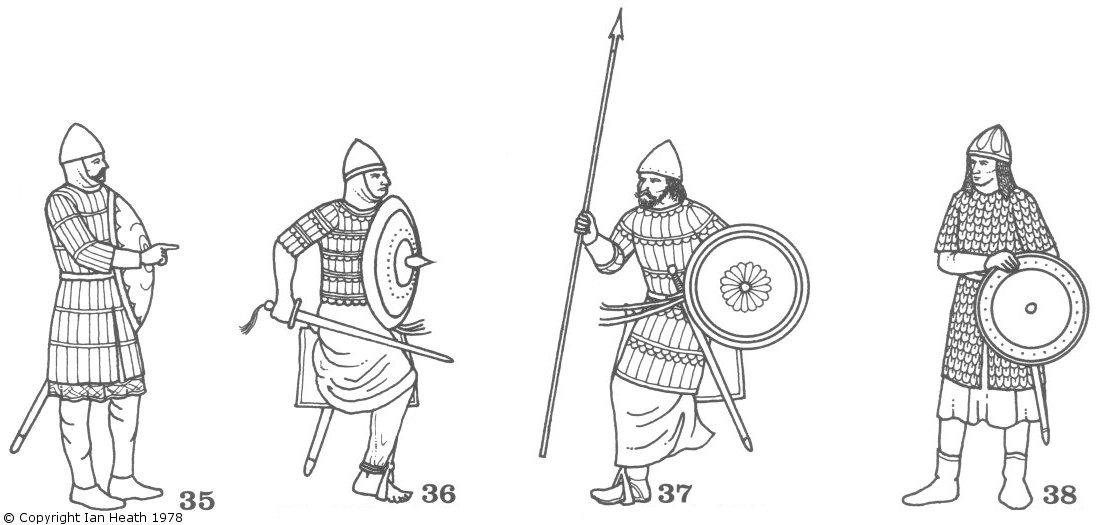Create an Amazon Wedding Registry

Shop Amazon - Create an Amazon Baby Registry
SYRIAN CAVALRYMEN
An extract from Armies and Enemies of the Crusades 1096-1291
by Ian Heath

[Based on painted windows in the monastery church of St Denis, Paris, in Les Monuments de la Monarchie Françoise]
35, 36, 37 & 38. SYRIAN CAVALRYMEN c. 1150
These figures are from a series of 10 painted windows once in the monastery church of St Denis in Paris.
These windows, of mid-l2th century date, the commissioning of which has been accredited to Louis VlI's chief minister Abbot Suger,
were destroyed during the French Revolution but are known from sketches executed by Montfaucon in 1729
(in 'Les Monuments de la Monarchic Françoise')
in which, alas, the originals were not copied altogether clearly.
The equipment portrayed was probably based on the reports of eye-witnesses who had participated with Louis in the Second Crusade,
though the episodes depicted actually all took place during the First Crusade.
The figures themselves are probably Syrians, representing Turkish mamluks of the various 'askars.
35, 36 and 37 all appear to wear quilted al-Qutuns (see note 10),
strengthened with scales in the latter 2 instances, though possibly 36 may be a very poor representation of a lamellar Djawshan
(see 48); certainly the Charlemagne window of c. 1210 in Chartres Cathedral, wherein certain details were inspired by if not copied directly from the original St Denis windows, shows Moslems wearing corselets that are undoubtedly lamellar, so it is possible that some of the St Denis figures too themselves wore lamellar armour. Other figures in Montfaucon's sketches quite clearly wear mail corselets, sometimes with coifs, while a few, of which 38 is the clearest, wear scale.
Helmets are all either conical - probably the type called Baida (egg) because of its shape - or hemispherical, or of Spangenhelm construction,
sometimes apparently with cloth, leather or mail aventails.
Shields are circular and come in various sizes, often with acutely spiked bosses like that of 36. Arms consist chiefly of sword and lance,
the latter of no outstanding length (undoubtedly restricted by the confines of the illustration area involved);
although a few horse-archers are also apparent bows are, rather curiously, heavily outnumbered by lances and none of Montfaucon's sketches show bowcases or quivers.
These particular figures are taken respectively from scenes depicting the battles of
Nicaea (1097),
Ascalon (1099),
Dorylaeum (1097) and
Antioch (1098).
Next: 39, 40, 41 & 42. TURKISH CAVALRYMEN in Armies and Enemies of the Crusades 1096-1291 by Ian Heath


